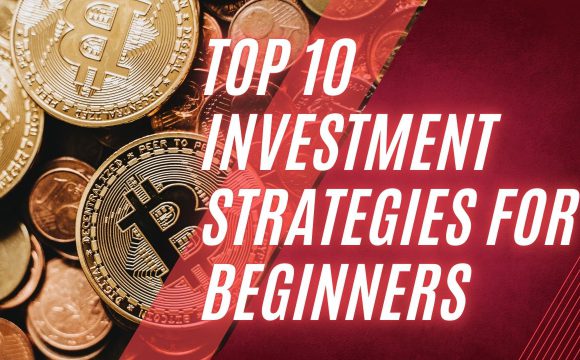Introduction: Setting the Stage for the Investment Debate
Investing can feel like juggling flaming swords while riding a unicycle: exhilarating, risky, and at times, outright terrifying. In an era where financial literacy is more critical than ever, understanding your investment options is paramount. Whether you’re looking to grow your nest egg or simply secure your financial future, it’s essential to wade through the waters of passive and active investing. So let’s untangle this financial knot and see which investing approach suits you best.
Understanding Investing Basics
What is Investing? The Art of Making Your Money Work for You
At its core, investing is the process of allocating resources, usually money, with the expectation of generating income or profit. It’s about making your money work for you—not the other way around!
Risk and Return: The Vital Duo of Investment Enthusiasm
Every investor must grapple with the balance between risk and return. Generally, the higher the potential return, the greater the risk. Understanding this relationship is crucial for your investment strategy. Like deciding whether to eat that third slice of cake—delicious, but you might pay for it later!
Diving Into Active Investing
Active Investing Unmasked: A Closer Look at the Strategy
Active investing involves frequent buying and selling of assets with the aim of outperforming the market. Picture a fast-paced game of chess, where every move counts. Active investors research, analyze, and make strategic decisions in hopes of finding lucrative opportunities.
Pros and Cons of Active Investing: Is It Worth the Hype?
The benefits? Potential for higher returns and the ability to capitalize on market fluctuations. The downsides? Higher fees, more time commitment, and the risk of getting it wrong (hello, costly mistakes!).
The Role of Research and Analysis: Sherlock Holmes Meets Wall Street
Active investors are like detectives, sifting through economic reports, breaking down company earnings, and analyzing market trends. This meticulous research can turn a good investment into a fantastic one or save you from a financial catastrophe.
Active Managers: The High-Energy Athletes of the Financial World
Active fund managers are akin to financial Olympians. They’re focused, disciplined, and constantly on the lookout for market mispricings. But remember, even the best athletes have off days!
Real-World Examples: When Active Investing Shines (And When It Doesn’t)
Consider a star fund manager who deftly navigated a recession. Their ability to pivot and reallocate assets led to outsized gains, showcasing the effectiveness of active investing. On the flip side, many active managers fail to beat their benchmarks over the long run, highlighting that it’s not all glory and championship trophies.
Exploring Passive Investing
The Passive Approach: Taking a Back Seat in the Financial Car
Passive investing, on the other hand, is like putting your investments on cruise control. Instead of frequent trading, you invest in index funds or ETFs that mimic market performance. You sit back, relax, and let the market do its thing.
Advantages and Disadvantages of Passive Investing: Less Stress, Fewer Gains?
The perks? Low fees, minimal trading, and often better long-term performance due to lower risk. The drawbacks? You might miss out on dramatic price swings and potentially lucrative opportunities if the market unexpectedly booms.
Index Funds and ETFs: The Twin Pillars of Passive Investing
Index funds and exchange-traded funds (ETFs) are the go-to options for passive investors. They’re like the trusty sidekicks that help keep your investment portfolio balanced and diversified.
The Long Game: How Patience Pays in Passive Investing
Passive investing is about playing the long game. Studies show that markets trend upwards over time, and those who stay the course often reap significant rewards. Remember, patience is a virtue—especially in investing!
Success Stories: When Passive Investing Steals the Show
Countless investors have found success with passive investing, like those who bought into the S&P 500 decades ago. Their patience paid off, demonstrating that sometimes the best strategy is the simplest one.
Comparative Analysis: The Showdown
Performance: Who Comes Out on Top?
Research suggests that, over the long haul, passive investing often outperforms active investing due to lower fees and the challenges active managers face in consistently beating their benchmarks.
Costs and Fees: The Silent Killers of Your Returns
Active investing usually incurs higher fees, which can severely affect your long-term gains. Always remember: those tiny percentages can snowball into significant amounts over time.
Time Commitment: Busy Lifestyle vs. Weekend Warrior
Active investing is a hands-on approach that can be time-consuming. If you’re balancing work, family, and a social life, passive investing may be your saving grace.
Emotional Investment: Keeping Your Cool in Market Chaos
Active investing can lead to emotional rollercoasters as you react to market volatility. Passive investors, however, are less likely to make impulsive decisions—keeping their blood pressure in check!
Finding Your Fit: Which Style is Right for You?
Assessing Your Financial Goals: Growth vs. Stability
Identify whether your primary goal is steady growth or aggressive returns. Your financial objectives should inform your investing strategy.
Understanding Your Risk Tolerance: Are You a Daredevil or a Cautious Turtle?
Your comfort with risk is vital. If you have a low tolerance for risk, passive investing may provide the calmer waters you crave. Conversely, thrill-seekers might thrive in active investing.
Lifestyle Considerations: How Much Time Can You Dedicate to Investing?
Evaluate how much time you can realistically devote to managing your investments. Busy professionals might prefer the set-it-and-forget-it model of passive investing.
The Importance of Diversification: Don’t Put All Your Eggs in One Basket (Especially if It’s a Weak Basket)
Regardless of the approach, diversifying your investments is crucial. It’s like spreading your bets at a casino; you want to mitigate risk and increase your chances for success.
Incorporating a Hybrid Approach
Blending Active and Passive Strategies: The Best of Both Worlds
Why choose one when you can have both? Many investors find a hybrid approach—combining passive index funds with a sprinkle of active investing—works well for them.
Case Studies: Investors Who Successfully Balance Both Styles
Consider investors who allocate a portion of their portfolio to passive investments while actively trading a smaller part. This allows them to enjoy the benefits of both methods without overextending.
Tips for Starting Your Investing Journey
Setting Realistic Expectations: How to Avoid Falling for Unicorns and Rainbows
Investment returns aren’t magical; they require patience and realistic goals. Avoid the fantasy of getting rich overnight—most of us are not in a Disney movie!
Tools and Resources: Your Investment Toolbox for Success
Leverage online platforms, robo-advisors, and mobile apps to simplify your investing journey. Educating yourself can empower your financial decisions.
The Power of Continuous Education: Stay Sharp or Get Left Behind
The financial landscape is always changing. Committing to ongoing learning helps you stay informed and reduces the likelihood of costly mistakes.
Conclusion: Crafting Your Path to Financial Freedom
In the age-old debate of passive vs. active investing, it’s clear that each approach has its strengths and weaknesses. Recap your key points—understanding your goals, risk tolerance, and lifestyle considerations are vital in choosing your path.
Embrace the journey of investing, whether you’re actively chasing market gains or passively gliding along. Remember, the goal is financial freedom, and every step you take towards it counts. Now, go forth and invest wisely—your future self will thank you!







